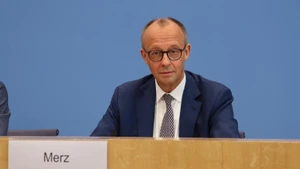The economic picture is expected to become brighter, but there are still many challenges in the transition from 2023 to 2024, in the context of geopolitical tensions that may pose potential risks, leading to the pressure of price increases and negatively impacting the global supply chain.
Bright spot in the picture
The IMF head's comments on the global economic outlook were made in the context that the world's leading economies witnessed strong signs of recovery. The US Federal Reserve (FED) has just released its periodic report on economic conditions, also known as the Beige Book, which shows that the world’s No.1 held steady in recent weeks, as consumer spending helped offset weakness in other sectors such as manufacturing.
In particular, consumer spending during the year-end holidays met expectations in most areas surveyed by the FED, in which the New York area increased beyond expectations. Many businesses continued to express optimism about the prospect of the FED lowering interest rates in the near future.
According to the FED, businesses noted easing inflationary pressures, with increased consumer price sensitivity, forcing retailers to narrow profit margins and push back against suppliers' efforts to raise prices, helping to stabilise or reduce input prices.
Notably, many signs showed that the labour market in the US is cooling down. Businesses in many regions predicted wage growth would continue to decline in 2024. According to statistics from the US Department of Commerce, the number of new unemployment benefit applications has increased slightly but is still near the lowest level on record. Historically, there are signs that the labour market continued to be strong and is a fulcrum for economic growth, helping the world's leading economy avoid recession this year.
The smaller-than-expected increase in weekly jobless claims and data showed retail sales unexpectedly rose in November 2023, as did single-family home starts and occupancy levels. Construction permits rose to their highest level in a year and a half, prompting economists to raise their growth estimates for the US economy in the fourth quarter of 2023.
However, a worrying issue is rising shipping costs due to drought in the Panama Canal and trade disruptions in the Red Sea pushing up shipping rates.
Meanwhile, China’s economic growth in 2023 still exceeded the set target, showing an overall bright picture of the world's second-largest economy after a challenging year. According to China's National Bureau of Statistics, industrial output - an important economic indicator, will increase by 4.6% in 2023, with a special breakthrough, when in December 2023 alone, industrial output increased by 6.8% over the same period last year.
Despite slow growth due to the downturn in the real estate sector, Chinese investment in infrastructure and manufacturing increased sharply. Fixed asset investment in 2023 increased by 3% over the same period last year. Investment in infrastructure construction and the manufacturing sector in 2023 increased by 5.9% and 6.5% respectively from a year earlier, while real estate development investment decreased by 9.6%. China's high-tech industries have seen strong growth, with investment up 10.3% over the same period last year.
Retail sales - an indicator of consumer strength, increased by 7.2% for the whole year, with an increase of 7.4% in December 2023 alone. The unemployment rate fell to 5.2% for the year, although it increased slightly in December 2023. The brightest point in the economic picture is that GDP growth in 2023 reached 5.2%, exceeding the target of 5% set by the Chinese Government.
However, at present, the economy is still facing problems, such as a prolonged real estate recession affecting the overall economic recovery, and business and consumer confidence is still weak.
The Asian region’s economy also witnessed positive signs. The ASEAN+3 Macroeconomic Research Office (AMRO) based in Singapore stated that the ASEAN+3 regional economy (including 10 ASEAN countries and three partner countries of China, Japan and the Republic of Korea), will reach growth at 4.5% in 2024, of which Vietnam's economic growth is predicted at 6%.
According to this research agency, maintaining the economic growth forecast of ASEAN+3 at 4.5% is mainly based on the growth motivation of external market demand, while the needs of countries in the region remain sustainable. In addition, two other factors driving the region's growth are the recovery of tourism activities in countries to pre-COVID-19 pandemic levels and the real estate sector in China is gradually recovering.
Mixed dark patches
Besides the economic bright spots, “clouds” still cast a shadow over some areas. While the US and China - the world's two largest economies - are forecast to grow moderately or stronger, Europe is likely to only achieve weak or very weak growth. A survey of leading economic experts showed that the global economy will face a year of instability and stunted growth in 2024 stemming from geopolitical tensions, tightening financial conditions, and the impact of artificial intelligence (AI) causes concern.
The survey results showed that overall global economic conditions will weaken this year, with clear regional differences. Although the world’s leading central banks have confirmed that interest rates have peaked, financial conditions are expected to loosen as inflation falls and the labour market eases.
Meanwhile, AI is expected to have an uneven impact on the world economy. 94% of respondents predict AI will significantly boost productivity in high-income economies in the next five years, while only 53% predicted the same for low-income economies. Another study published by WEF on the growth quality of 107 economies concluded that most countries are growing in a direction that is neither environmentally sustainable nor socially inclusive.
In response to the above forecasts, IMF Managing Director Georgieva called on China to persistently support state-owned enterprises, address debt concerns and enforce regulations in the real estate sector, considering these important measures to prevent the economy from falling into stagnant growth. Regarding the US economy, she mentioned a “soft landing”, coinciding with the expected time of federal interest rate cuts.
















